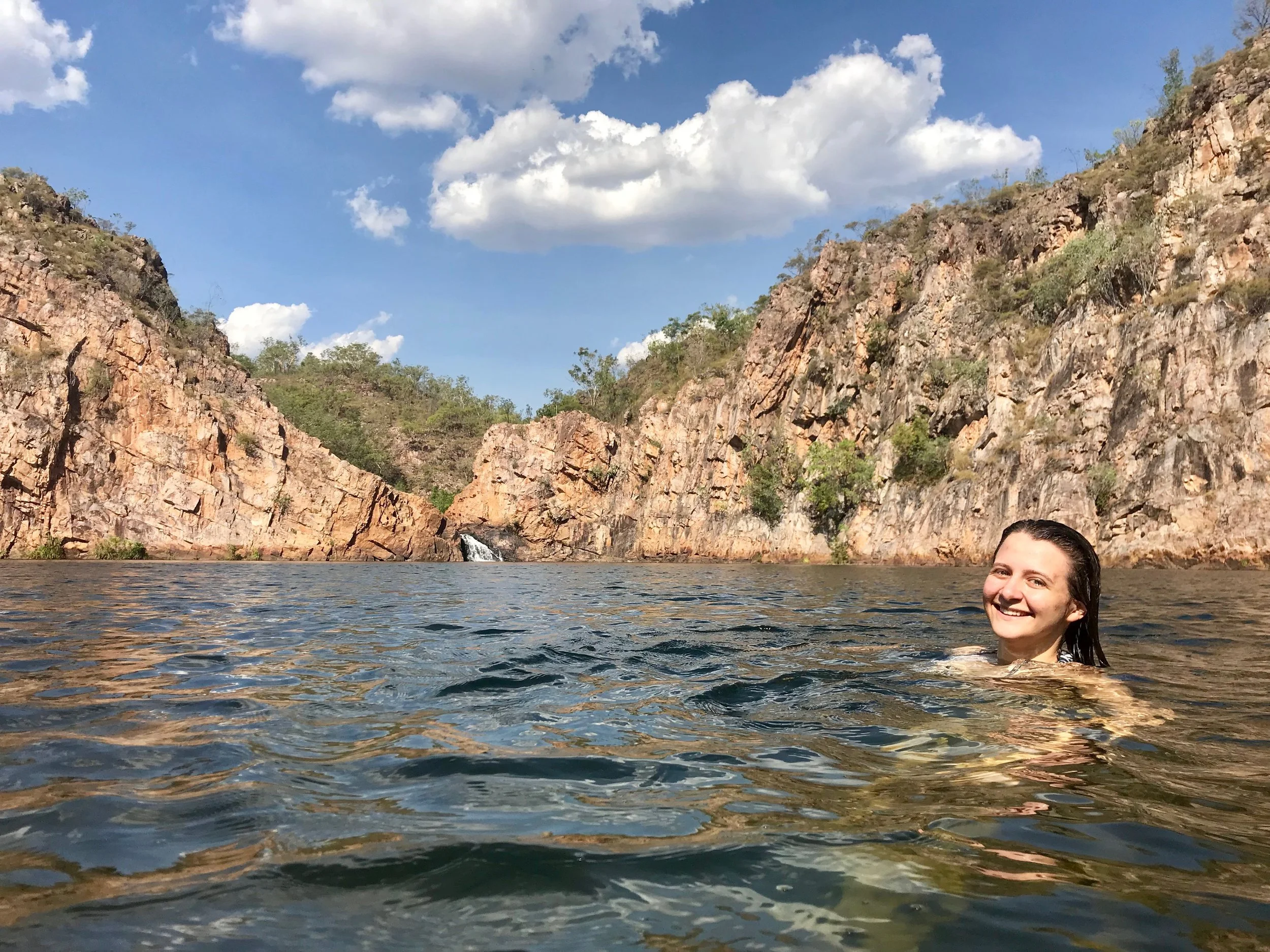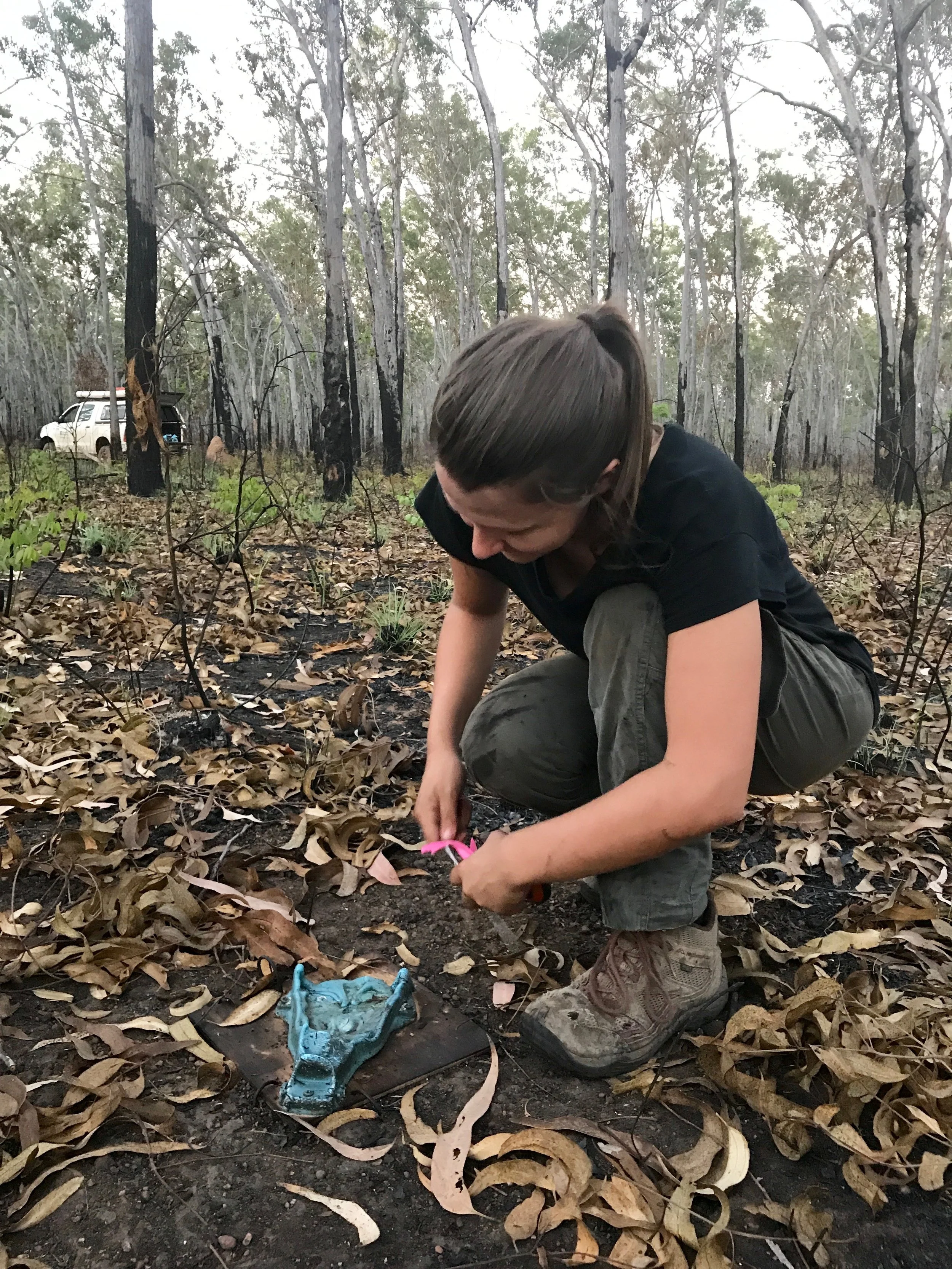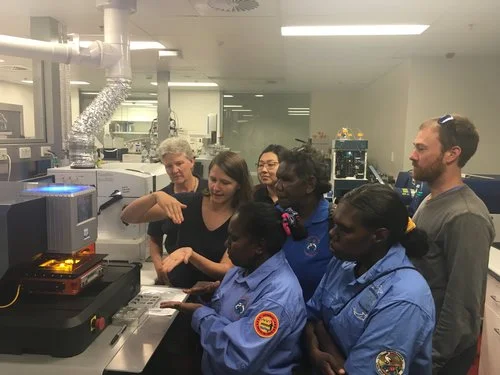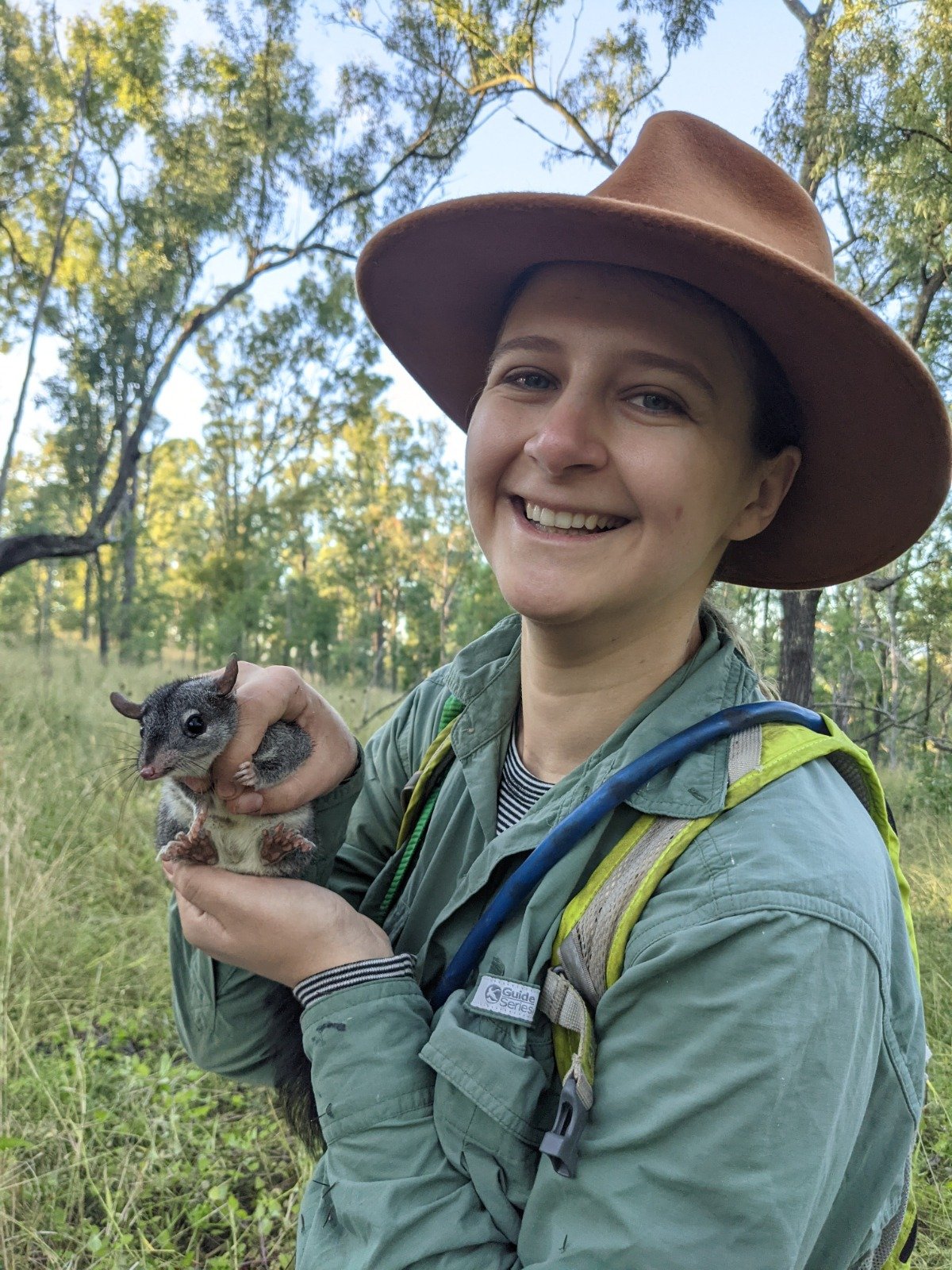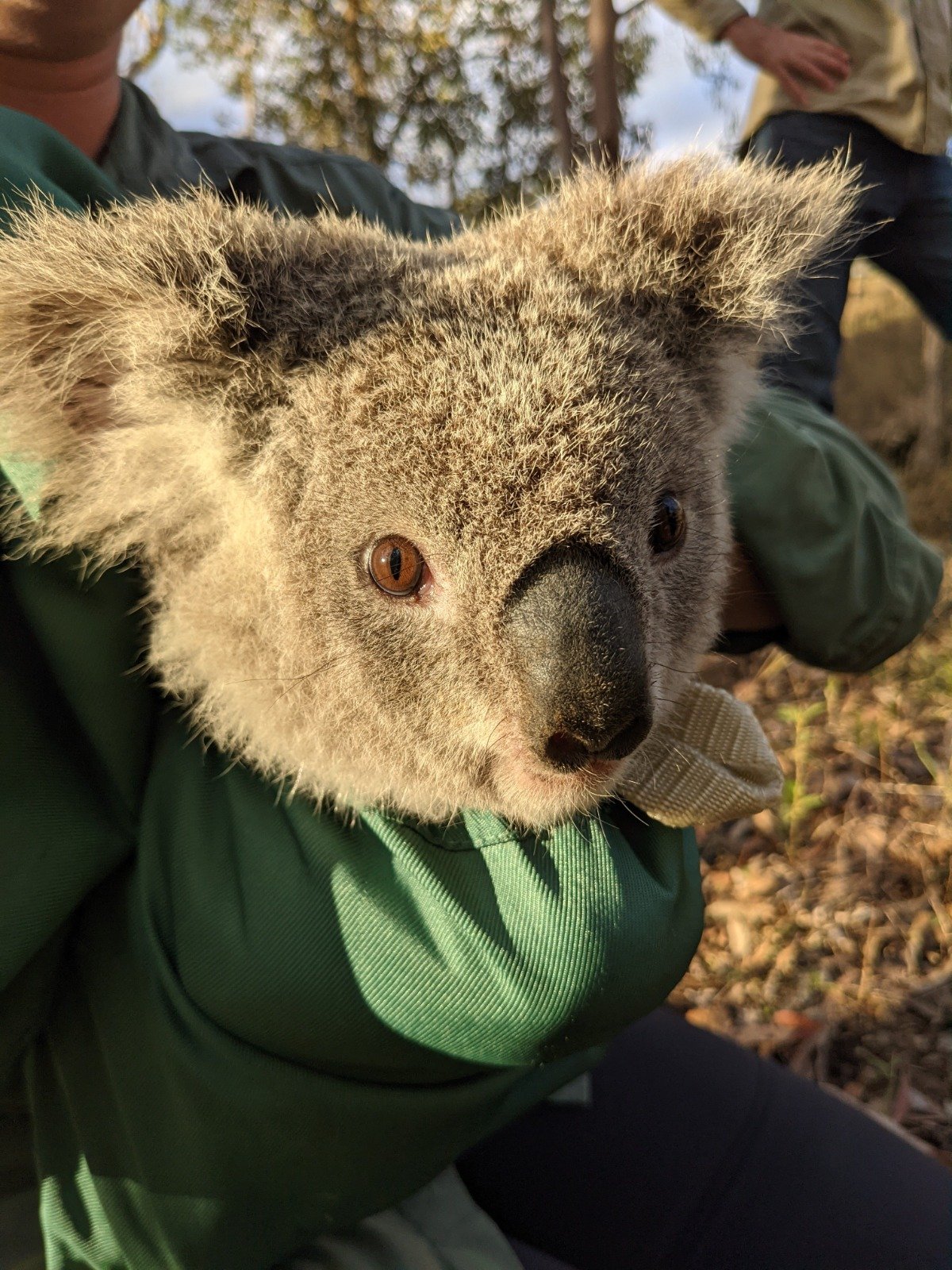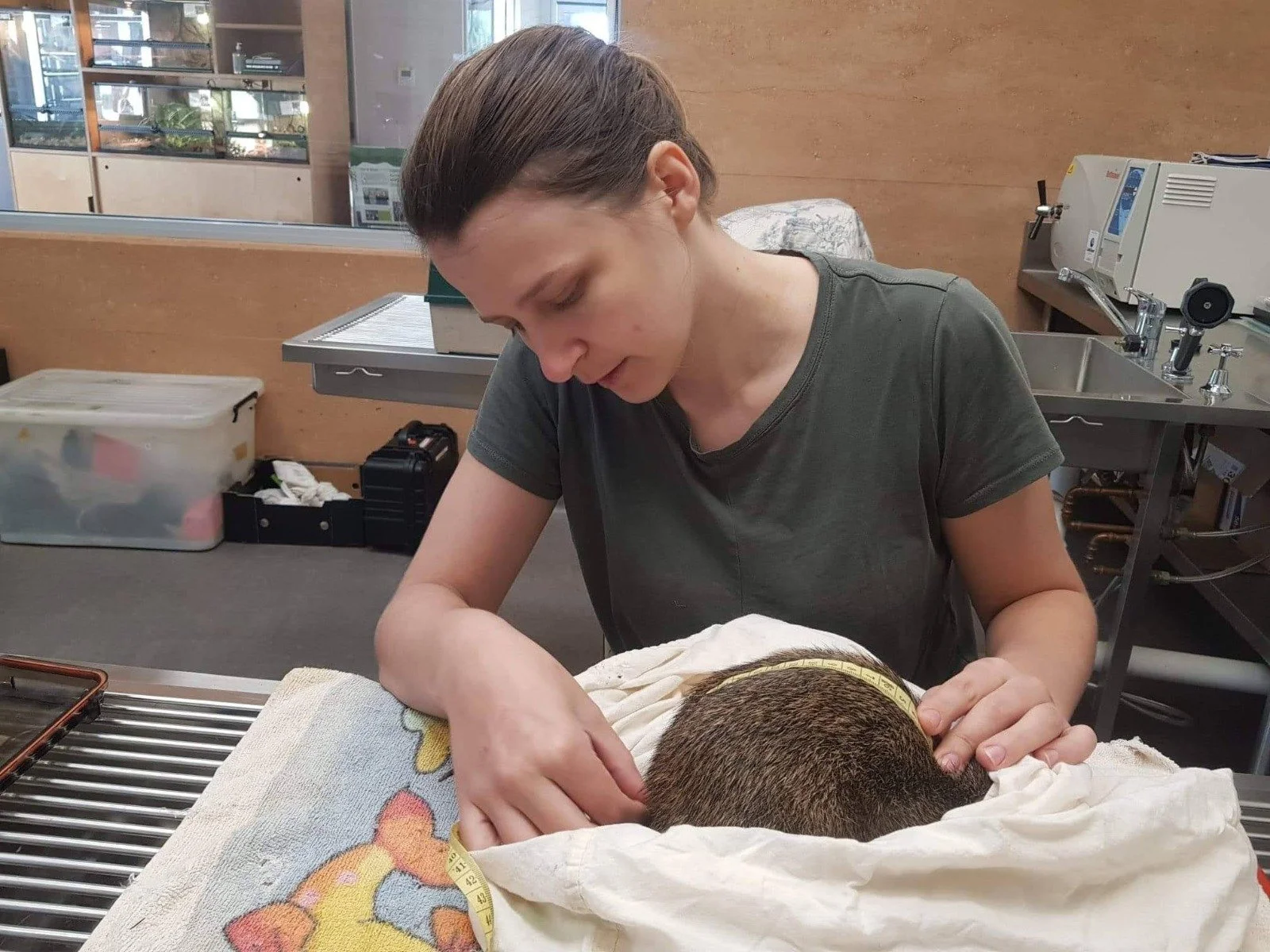Kaylah Del Simone
Using escape performance and behavioural data to predict the escape chance of the northern brown bandicoot in simulated predator-prey interactions
PhD Student and Research Assistant kaylah.delsimone@uq.net.au
BSc (Hons) Zoology & Geographical Science - University of Queensland
Like most other wildlife scientists, I’ve always had an affinity for animals and knew from an early age I had to pursue a career where they took centre stage.
I started my undergrad in a Bachelor of Environmental Management, however after a semester I quickly changed to a Bachelor of Science majoring in geographical Science and zoology. My drive to actually pursue research was found during this period after completing an outback ecology field trip and volunteering for lab groups within the uni. I fell in love with Australian fauna, helped look into the swimming performance of native fish, and assisted in collecting camera footage of northern quolls.
Working hard in the field to set up hair funnels
Swimming at Edith Falls, NT on our road trip north
During my honours with the Wilson Performance Lab I was fortunate enough to work on Groote Eylandt in the NT. I set hundreds of hair funnels throughout the island in order to collect hair from both northern quolls and northern brown bandicoots, and using LA-ICP-MS, determined the concentration of heavy metal accumulation resulting from pollution. After this experience, I begun work as a research technician shorty after. In this role, I used skills learned in my honours revolving around LA-ICP-MS and ICP-OES to analyse all kinds of samples, from hair, to soil, to dust from air filters.
What happens to a hair funnel no matter how much you try to protect it from fire
Setting traps for live animal capture as part of my honours of Groote Eylandt
Post northern quoll photo - prior to release on island as part of my honours research
Currently, I am in the final stages of completing my PhD. My thesis focuses on board scale predator-prey interactions in terrestrial ecosystems between critical weight range species and invasive predators. I used the northern brown bandicoot as a study species in order to determine which aspects of their performance and behaviour increased their susceptibility to predation. I approached this question in three main parts, first being how likely a northern brown bandicoot was to escape in a chase, how likely would they be detected by a predator, and how can their habitat influence their overall survivability. I was able to quantify their maximal performance capabilities including sprint speed and agility, as well as find evidence to suggest a trade-off between these aspects resulting from their semi-fossorial morphology and sexual dimorphism. Following on from this, I used accelerometers to train a machine learning algorithm and classify free-ranging behaviour, speeds, energy expenditures, temporal activity, and habitat use. Finally, I used agent-based models to simulate chase events between the northern brown bandicoot and three main predator agents in different habitats.
Processing hair samples for LA-ICP-MS, ICP-OES and the ILOITE software
Demonstrating to the Anindilyakwa Land and Sea Rangers how the laser hair analysis works
In addition, I have assisted in various other projects, from working with the koala ecology team capturing and tracking koalas, to working with the University of New South Wales and Arid recovery, comparing the behaviour between native and invasive arid zone species during heat waves.



